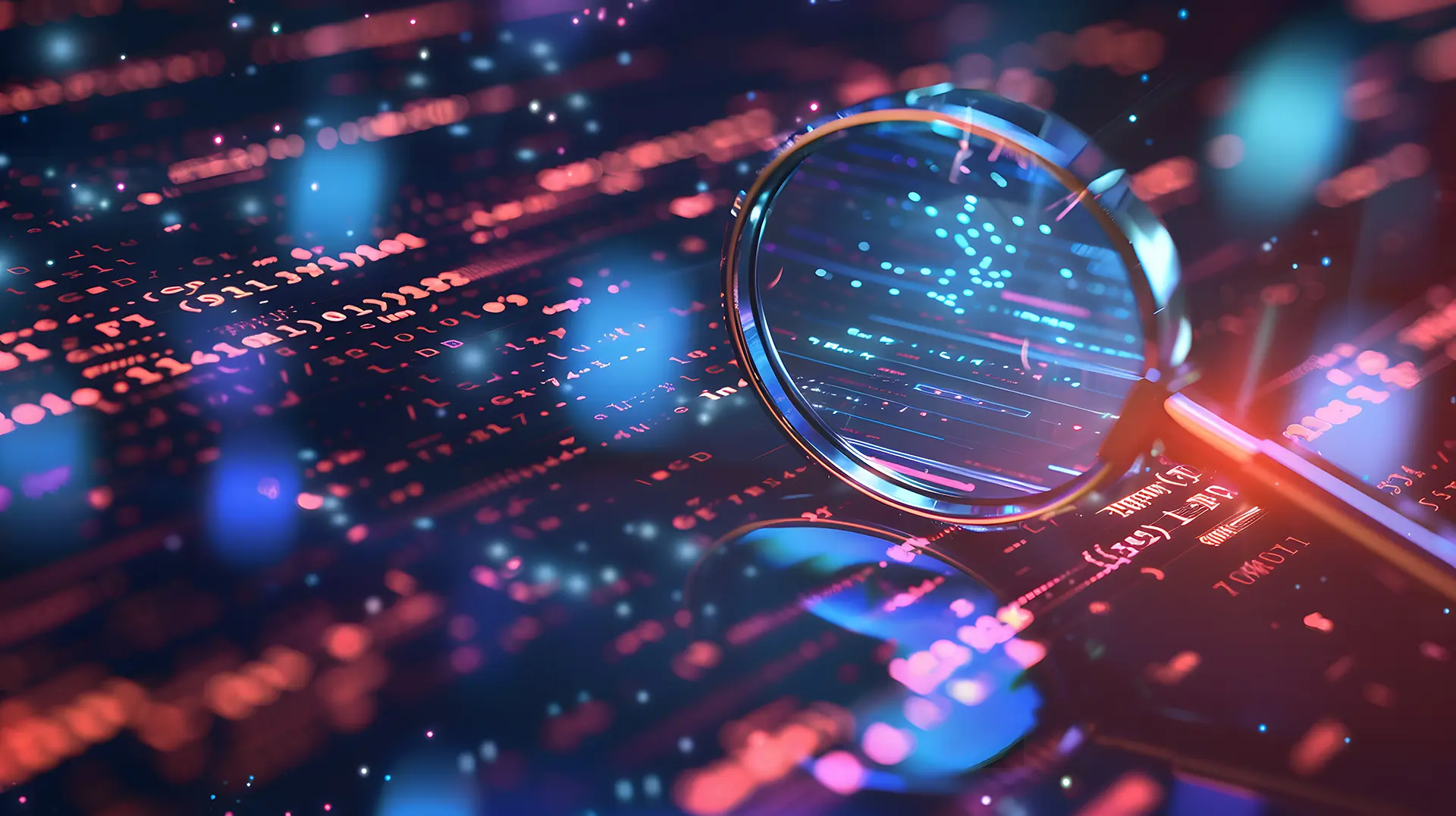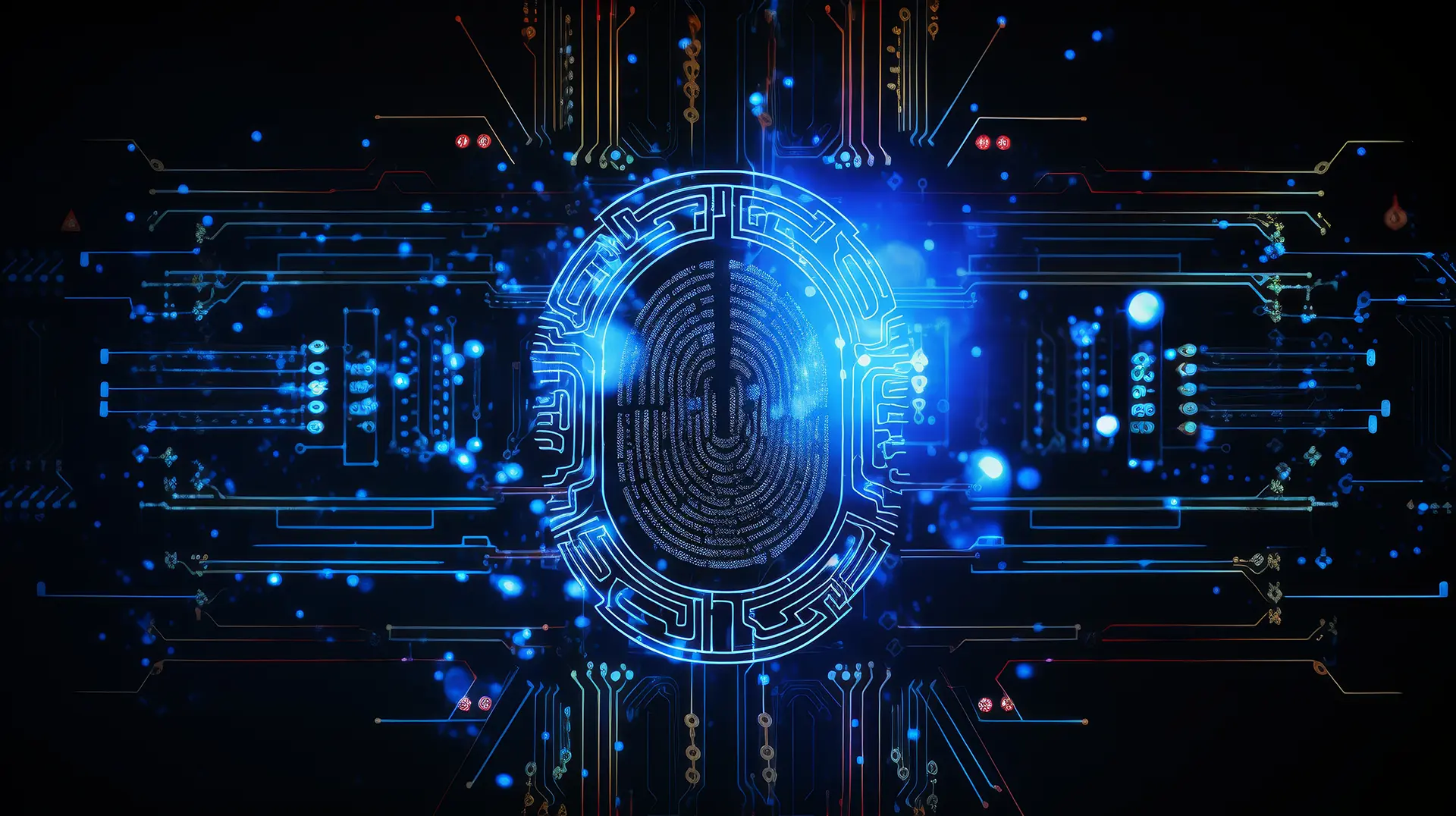Table of contents
- What are biometric data?
- Biometric authentication and security
- Two implementations of security using biometrics
- Other implementations of biometric security
- Opportunities of biometric technologies
- Risks and challenges of biometrics
- An important step in data protection
Biometric techniques used in IT security offer advanced security levels and more robust recognition compared to traditional methods. These include facial recognition systems and fingerprint scanners.
What are biometric data?
Biometric data include unique physical elements such as fingerprints, facial recognition, iris scans, and voice. These factors are used to uniquely recognize an individual, making biometric recognition a powerful technique for security.
Biometric authentication and security
Biometric recognition offers a higher level of security compared to traditional methods like passwords and PINs, which can be easily compromised. With the use of facial recognition systems and fingerprint scanners, it is possible to ensure that only recognized individuals can access certain information or areas.
Two implementations of security using biometrics
Facial recognition systems in access control
Facial recognition is one of the most advanced and widely used biometric techniques for access control in high-security environments. This system analyzes unique facial factors of an individual, such as the distance between the eyes, nose shape, and bone structure, to create a digital model that can be compared with stored data.
Advantages of facial recognition
- High precision
modern facial recognition systems use advanced artificial intelligence algorithms that ensure high security. - Non-intrusive
unlike other biometric identification methods, facial recognition does not require physical contact, reducing the risk of germ transmission. - Speed and efficiency
allows for quick recognition, ideal for environments with high traffic such as airports and train stations.
Examples of use
- Airports
Many airports, including those in London and Beijing, have implemented facial recognition systems to expedite security checks and improve passenger experience. - Government and corporate buildings
Used to ensure that only authorized personnel can access sensitive areas, increasing security and reducing the risk of infiltration. - Fingerprint scanners in mobile devices
Fingerprint scanners have become a standard biometric technique in modern mobile devices due to their ability to provide secure and convenient recognition. These systems use optical or capacitive sensors to capture the user’s fingerprint image and compare it with stored data.
Advantages of fingerprint scanners
- Convenience
Allows users to unlock their devices and authorize payments with a simple touch.
- High security
Fingerprints are unique to each individual, making it extremely difficult for someone with bad intentions to replicate or falsify identity.
- Integrability
Easily integrated into a wide range of devices and applications, from mobile phones to corporate access systems.
Examples of use
- Smartphones
Most high-end smartphones use fingerprint scanners for user authentication and the security of financial transactions.
- Laptops and computing devices
Many laptops and other computing devices include fingerprint scanners to ensure that only authorized users can access sensitive data.

Other implementations of biometric security
The use of biometric technologies in security systems is increasingly widespread due to their ability to provide high security levels and reliable authentication. Below are detailed some of the main biometric applications.
Iris recognition techniques
Iris recognition is another biometric technique used for security that exploits the uniqueness of the iris pattern in the human eye. This technique is highly precise and difficult to replicate, making it ideal for high-level security applications.
Advantages of iris recognition systems
- Very high precision
Considered one of the most precise biometric techniques available.
- Recognition speed
Allows for quick recognition useful in scenarios where speed is crucial.
- Robustness
Less susceptible to changes over time compared to other biometric techniques like fingerprints.
Examples of use
- Access to sensitive data
Used in government and military environments to protect extremely sensitive information.
- Border control
Some countries often use iris recognition in their border control systems to enhance security and efficiency.
Voice recognition
Voice recognition uses the unique biometric characteristic of a person’s voice for authentication. This technique can be particularly useful in environments where the use of hands is limited or impractical.
Advantages of voice recognition
- Non-intrusive
Does not require physical contact, offering a convenient authentication method.
- Versatility
Can be used in a variety of applications, from mobile devices to telephone access systems.
Examples of use
- Customer service
Used in customer service lines to verify user identity securely and conveniently.
- Smart home devices
Integrated into smart home devices to control access and operations via voice commands.
Opportunities of biometric technologies
The use of biometric technologies in security presents numerous opportunities. The ability to have quick and secure authentication improves efficiency and user experience. Additionally, biometrics can be integrated into various security systems to provide an additional barrier against unauthorized access and data breaches.
- Advanced security levels
Biometric techniques offer advanced security levels that significantly reduce the risk of fraud and unauthorized access. Using biometric data for IT security, companies can better protect sensitive information and prevent hacking attacks.
Risks and challenges of biometrics
Despite the numerous advantages, the use of biometrics also involves risks and challenges. Protecting biometric data is crucial as compromising this information can have serious consequences. Unlike passwords, biometric data cannot be changed; therefore, once compromised, the affected individual is vulnerable forever.
Biometric data security
Cyber security must address the protection of biometric data with the same seriousness reserved for other forms of sensitive data. Biometric systems must be designed to ensure that data is encrypted and protected against unauthorized access.
An important step in data protection
The integration of biometrics into security represents an important step forward in protecting information and access. However, it is crucial to balance the benefits with robust data protection and address the challenges related to privacy. Companies must carefully evaluate the quality of their biometric systems and implement adequate measures to protect users’ biometric data.
FAQ
- What are biometric data?
Biometric data are unique physical elements such as fingerprints, facial recognition, and iris scans used to uniquely recognize an individual. - What are the advantages of biometric authentication?
Offers a higher level of security, reduces the risk of fraud and unauthorized access, and improves access efficiency. - What are the risks associated with the use of biometrics?
The compromise of biometric data can have serious consequences since these data cannot be changed. - How are biometric data used in mobile devices?
Fingerprint scanners in mobile devices are used to unlock the device and authenticate transactions. - What biometric techniques are used in IT security?
Common techniques include facial recognition and fingerprint scanners. - How can biometric data be protected?
Biometric data must be encrypted and protected against unauthorized access through advanced security measures. - Which sectors use biometrics the most?
Biometrics are widely used in airports, high-security buildings, and mobile devices for authentication.
